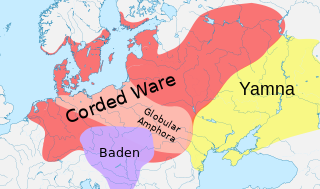 W
WThe Baden culture, c. 3600–2800 BC, is a Chalcolithic culture found in Central and Southeast Europe. It is known from Moravia, Hungary, Poland, Slovakia, northern Serbia, western Romania and eastern Austria. Imports of Baden pottery have also been found in Germany and Switzerland, where it could be dated by dendrochronology.
 W
WThe Bijelo Brdo culture or Bjelo-Brdo culture is an early medieval archaeological culture flourishing in the 10th and 11th centuries in Central Europe. It represents a synthesis of the culture introduced in the Carpathian Basin by the conquering Hungarians around 900 and of earlier cultures existing in the territory before the Hungarian conquest. Female dress accessories, including "jewellery of plaited wire, two-piece sheetwork pendants, snake-head bracelets and S-shaped temple-reings", are the most characteristic items of the culture. The culture disappeared around 1100, most probably not independently of laws adopted under Kings Ladislaus I and Coloman of Hungary which prescribed the burial of dead in graveyards developed near churches.
 W
WThe Bodrogkeresztúr culture was a middle Copper Age culture which flourished in Hungary from 4000 to 3600 BC.
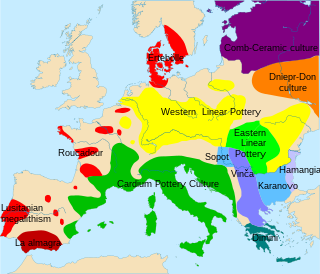 W
WBükk culture may have belonged to a dense pocket of Cro-magnon type people inhabiting the Bükk mountains of Hungary and the upper Tisza and its tributaries. The surrounding Neolithic was mainly of a more gracile Mediterranean type, with a Cro-magnon admixture as another possibility. As to whether the Cro-magnons were a remnant squeezed into this pocket, there is no sign of conflict there and the Cro-magnons were doing rather well in the obsidian trade. They were, so to speak, the wealthy men of the European Neolithic.
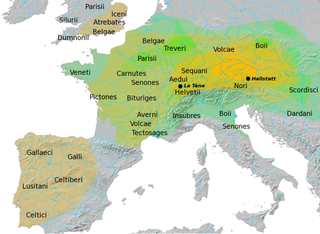 W
WThe Hallstatt culture was the predominant Western and Central European culture of Late Bronze Age from the 12th to 8th centuries BC and Early Iron Age Europe from the 8th to 6th centuries BC, developing out of the Urnfield culture of the 12th century BC and followed in much of its area by the La Tène culture. It is commonly associated with Proto-Celtic and Celtic populations in the Western Hallstatt zone and with (pre-)Illyrians in the eastern Hallstatt zone.
 W
WThe Hatvan culture was a Hungarian Bronze Age archaeological culture that succeeded the Nagyrév culture. The earliest identified settlements are located in the Cserehát Hills, later expanding into northern Hungary and the Tisza valley, and the Tiszazug area in Eastern Hungary. The end of Hatvan culture was associated with the expansion of the Ottoman culture.
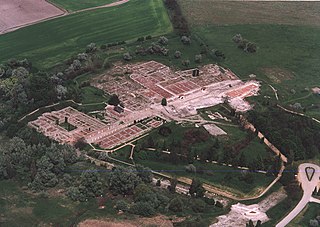 W
WKeszthely culture was created ca. 500 – 700 by the Romanized residents of Pannonia who lived in the area of the fortified village of Castellum, near Lake Balaton in now western Hungary.
 W
WThe Körös culture/Criș culture is a Neolithic archaeological culture in Central Europe that was named after the river Körös in eastern Hungary. The same river has the name Criș in Romania, hence the name Criş culture. The 2 variants of the river name are used for the same archaeological culture in the 2 regions. The Criș culture survived from about 5800 to 5300 BC. It is related to the neighboring Starčevo culture and is included within a larger grouping known as the Starčevo–Körös–Criş culture.
 W
WThe La Tène culture was a European Iron Age culture. It developed and flourished during the late Iron Age, succeeding the early Iron Age Hallstatt culture without any definite cultural break, under the impetus of considerable Mediterranean influence from the Greeks in pre-Roman Gaul, the Etruscans, and Golasecca culture.
 W
WThe Lengyel culture is an archaeological culture of the European Neolithic, centered on the Middle Danube in Central Europe. It flourished during 5000-3400 BC. The eponymous type site is at Lengyel in Tolna county, Hungary.
 W
WThe Linear Pottery culture is a major archaeological horizon of the European Neolithic, flourishing c. 5500–4500 BC. It is abbreviated as LBK, and is also known as the Linear Band Ware, Linear Ware, Linear Ceramics or Incised Ware culture, and falls within the Danubian I culture of V. Gordon Childe.
 W
WThe Middle-Danube Urnfield culture was a late Bronze Age culture of the middle Danube region.
 W
WThe Nagyrév culture was a Bronze-Age culture that existed in what is now Nagyrév, Hungary. It existed alongside the Vatya and Hatvan cultures and was eventually superseded by the latter. The main style of pottery was a one or two handed cup with a tall funnel neck that is made in a black burnished ware.
 W
WThe Starčevo culture, sometimes included within a larger grouping known as the Starčevo–Körös–Criş culture, is an archaeological culture of Southeastern Europe, dating to the Neolithic period between c. 6200 and 4500 BCE.
 W
WThe Szeleta Culture is a transitional archaeological culture between the Middle Paleolithic and the Upper Palaeolithic, found in Austria, Moravia, northern Hungary, and southern Poland. It is dated 41,000 to 37,000 years before the present (BP), and is named after Szeleta Cave in the Bükk Mountains, part of the North Hungarian Mountains.
 W
WThe Tiszapolgár culture or Tiszapolgár-Româneşti culture was an Eneolithic archaeological culture of the Great Hungarian Plain, the Banat, Eastern Slovakia and Ukrainian Zakarpattia Oblast in Central Europe.
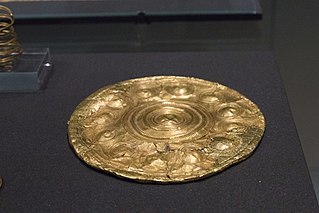 W
WThe Tumulus culture dominated Central Europe during the Middle Bronze Age.
 W
WThe Urnfield culture was a late Bronze Age culture of central Europe, often divided into several local cultures within a broader Urnfield tradition. The name comes from the custom of cremating the dead and placing their ashes in urns which were then buried in fields. Over much of Europe, the Urnfield culture followed the Tumulus culture and was succeeded by the Hallstatt culture. Some linguists, such as Peter Schrijver, have suggested that the people of this area may have spoken a form of Italo-Celtic, and suggest that the Proto-Celtic language may originate from a north-western Italian dialect of this language family.
 W
WThe Vučedol culture flourished between 3000 and 2200 BC, centered in Syrmia and eastern Slavonia on the right bank of the Danube river, but possibly spreading throughout the Pannonian plain and western Balkans and southward. It was thus contemporary with the Sumer period in Mesopotamia, the Early Dynastic period in Egypt and the earliest settlements of Troy. Some authors regard it as an Indo-European culture.